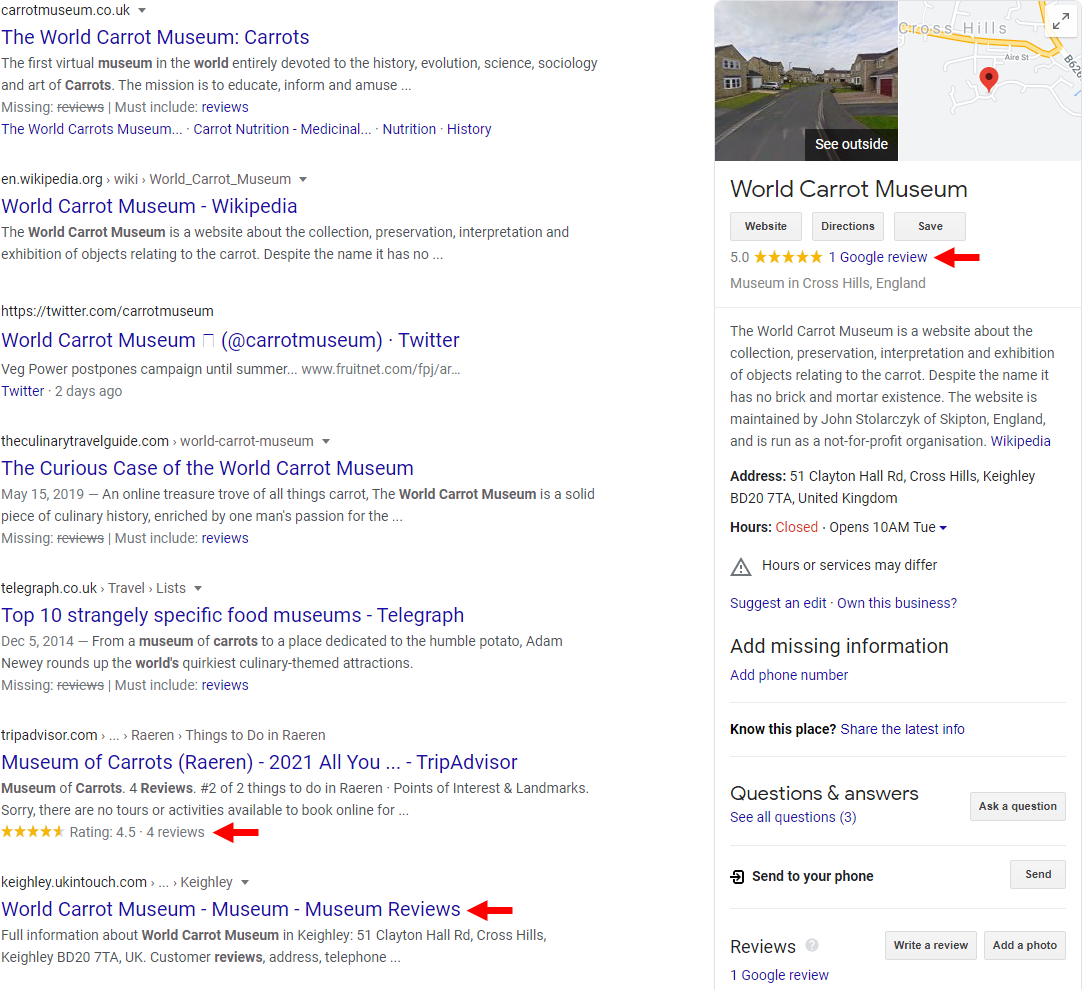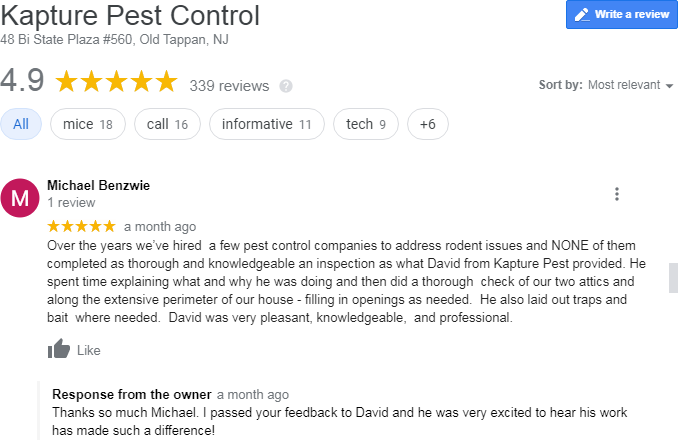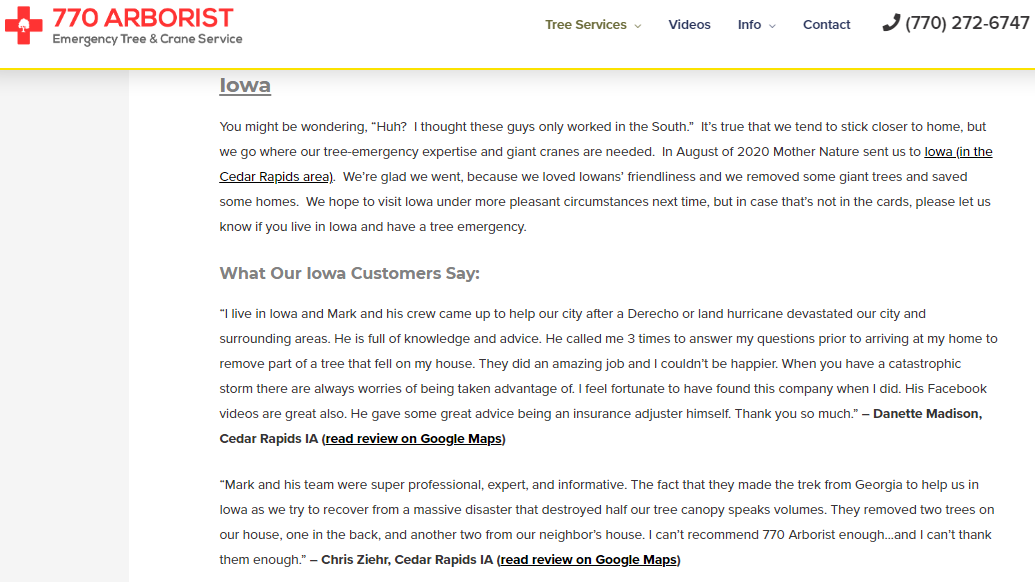Even people who do a solid job of getting online reviews tend to make the process tougher than it needs to be, because they do the right steps in the wrong order. That can mean unnecessary trial and error, frustration, wasted time, wasted money, and more bad reviews and fewer good reviews than you might have had otherwise.
Whether you’re the business owner, an employee, or a third party, you have a choice as to how you sequence your work. Examples of good steps that can trip you up if you do them at the wrong time include offering customers a choice of multiple review sites, asking them to upload photos or go into detail, and using software or other tools to lighten your lift. Good ideas? Maybe, but the effectiveness depends on the timing.
What’s the least-bad order of steps? Here are the stages that my clients have had the most success with, and so here is the basic 7-phase process I suggest you try if you want more and better reviews for your business:
1: Dissect what you’ve got
Where have people reviewed you so far? Is there a review site they seem to gravitate to? How many of your reviewers (customers, clients, or patients) did you ask for a review, and how many wrote one spontaneously? So far, who seems most inclined to write a review – the happy customers or the unhappy customers – or is it such a mixture of people that you just can’t tell? Is there one service, product, treatment, or other offering of yours that seems to make people want to review you? You get the idea. Lots of ways of looking at what’s in the net. You may want to spend 10 minutes scribbling down all your observations, big and small.

2: Shrink the goals and expand the efforts
It’s temporary, but whether you’re starting your push for reviews for the first time or this is Rocky II (or III or IV), the goal is the same: see what happens when you point everything you’ve got at getting your customers to complete the quickest, simplest review you can ask of them.
By the way, for a host of reasons I do not recommend you offer incentives for people to write reviews, but if you do insist on disregarding my advice, now’s the time to see what happens. If nothing else, at least you’ll know that under certain circumstances some people will write you a review.
It’s OK if the reviews are terse at this stage. Later on you can reviewers talking.
3: Test big differences
It’s not yet time to fine-tune. Try something very different, even if what you’ve tried has worked out well so far. Try having a different person ask for reviews. Try sending people to different review sites. Try a completely different email and subject line. Try to follow up with a quick phone call / voicemail, instead of or in addition to the follow-up email. Even try snail-mail. Either you’ll discover something that works better than you expected, or you’ll find out what doesn’t work and that your original system was pretty solid after all.
4: Weave reviews into more of your marketing
Write friendly, thankful responses to them, for positive reinforcement (even if the reviews have developed a crust).

Send personalized thank-you notes/emails to people who reviewed you.
Stick certain reviews on your site.

Tell people on your site or in any ads (e.g. Google Ads) to check our your great reviews, 5-star reputation, etc.
Here you’ve got two basic goals: make sure just about everyone sees your reviews (at least the good ones!), and increase the likelihood that customers choose you because of your reviews, so that they’re predisposed to write you reviews later, when the time comes.
5: Expand your goals
If you’ve had some success in getting people to write reviews – even if those reviews are brief and only on one site – now’s the time find the edges. Get a little greedy. Ask people who already reviewed you on one site (e.g. Google Maps) to review you somewhere else, too. (They can just copy and paste their review.) Ask reviewers to upload photos, if possible and appropriate. Ask reviewers to go into detail – the more, the better. If you’ve got repeat customers who reviewed you early on in your relationship, ask them to update their reviews to reflect everything you’ve helped them with since the 1.0 version. Consider doing what little you can to scare up Yelp reviews.
This is when you want to find out what customers are willing to do and what’s a bridge too far.
6: Consider introducing some automation
This may have been your very first thought, and the first step you wanted to take: “I don’t have time to ask for reviews, so can’t I just use a reputation-management tool?” Yes, now you can try. Now that you’ve got a system that works at least OK, it’s fine to see if you can make it easier with software and still have it work at least OK.
But if you tried software right out of the chute, without knowing what works and what doesn’t, it’s likely that all you would have done is scale an ineffective system or automate failure. And you’d have burned through your list of customers in the process. Make it effective, then try to make it easy. (If you’re at this stage, consider Whitespark’s Reputation Builder.)
7: Keep experimenting
It’s still worth repeating step #3 (the “test big differences” step) from time to time, but now is also a time to fine-tune your requests, try spacing out your requests differently, etc. To some extent you have no choice but to tweak, because the ecosystem of review sites change over time, the review sites themselves change over time, you get new customers, maybe you enter new markets, and you get curious (or inspired or greedy). You’ll always need to stress-test your process.
In any event, you’ll never have it down pat, and you’ll never be 100% satisfied, and there will always be room to improve (which is either pretty frustrating or exciting, depending on your outlook). Word of the day: kaizen.
Relevant posts
How Should You Ask for Online Reviews? The Pros and Cons of Each Approach
The Ridiculous Hidden Power of Local Reviews: Umpteen Ways to Use Them to Get More Business
60+ Questions to Troubleshoot and Fix Your Local Reviews Strategy
Why Your Review-Encouragement Software Is a Meat Grinder
25 Hard Truths of Google Reviews
Is There Anything You Can DO to Get Yelp Reviews These Days – without a Public Shaming?
16 Reasons to Get Reviews on a Diversity of Sites
Why Send Good Customers to Crappy Review Sites?
The Perfect Stack of Online Reviews: How Does Your Local Business Measure up?
Who Should Ask for Reviews: Business Owner or Employee?
—
What’s been your process? How well has it worked?
Any tips for any of the steps, or any phases you’d add to those 7 phases?
Leave a comment!

⭐ ⭐ ⭐ ⭐ ⭐ Would you kindly review us?
Phil, a great article. The best subject line for me is the one above.
Five gold stars followed by a request.
The content of the email is very clear too.
What made you choose us?
What outcome were you looking for?
How did you find working with us?
What would you say to others when recommending us?
That’s the basics with a little psychology thrown in for good measure.
My clients are getting partners based on Google reviews as the prime reason.
In a way it’s a shame reviews are so powerful, but it is what it is…
That’s very solid persuasion/writing, Boyd. Nicely done. I’d imagine that kind of email has earned its keep for you.